Winter is a time for rest and slowing down. The land slumbers after the labor of the growing season. Darkness takes center stage and at times, it seems the only sound one can hear is the soft, fizzy hissing of snowflakes falling to the earth. I have heard people suggest that there is less to see, experience and observe on the land in winter as compared to the sweltering, long days of summer where life bursts from every seam. It is said that in the winter we turn inward when the earth is frozen and still. Conversely, the warmer months are times of rebirth, growth and external movement.
This in many ways feels a bit human-centered. When I sat down to write this blog post, I felt pulled in many directions. The courtship and pair bonding behavior of owls, ducks, and eagles. White-tailed deer coming out of the breeding season and shedding their antlers, the return of our earliest migratory birds from their wintering grounds in February. Upon the Gaelic festival of Imbolc, the halfway point between the winter solstice and the vernal equinox, woodpeckers begin drumming and many birds begin singing their springtime songs. The temperature is low, and the days are short, but if one focuses their attention, there is so much to be experienced in the winter woodlands and farm fields.
The phenology clock
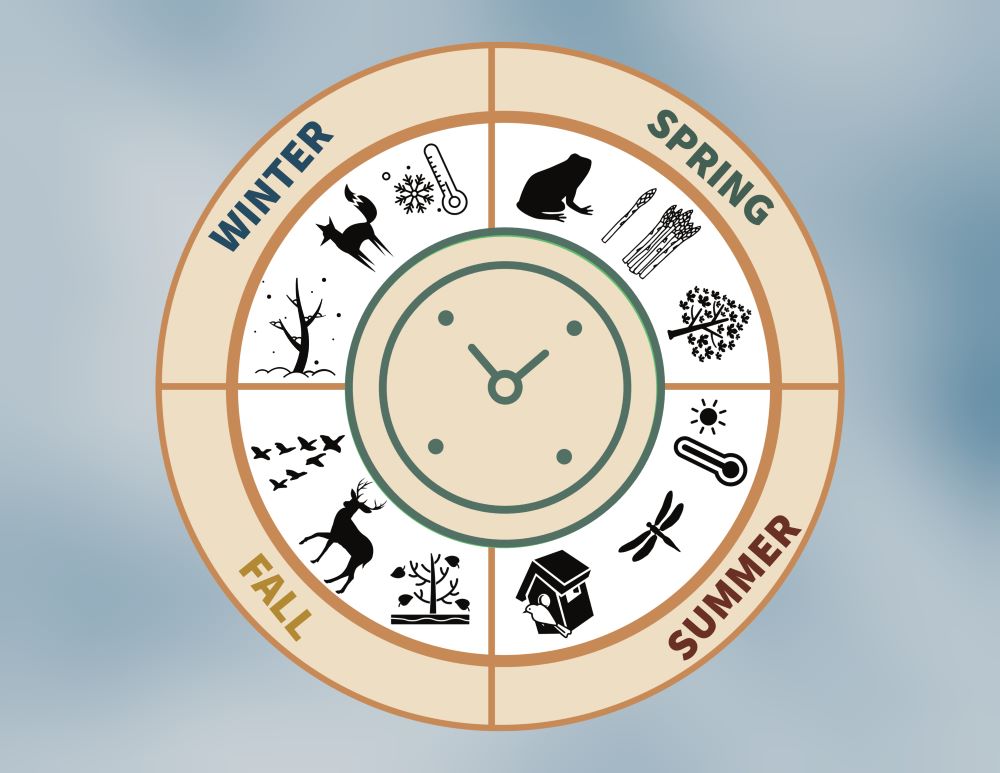
In winter, while some animals move to hibernacula and plants go dormant, other species begin egg laying or courtship. The timing of these seasonal changes in activity and behavior in organisms over the course of the year is referred to as phenology. Phenology is the study of the timing of seasonal changes and life cycle events. For example, when birds migrate, when trees leaf out or when frogs and salamanders lay eggs. One can learn a lot by making simple observations in a journal or calendar. You can begin by recording dates and observations such as weather data, blooming of flowers, planting dates of crops and other events. This allows you to see patterns emerge of these dates changing, or staying the same, over time. For example, from year to year it is quite common for migratory birds to return within days, or often the same exact date, as the previous year. However, when one looks at phenological trends over many years, one might begin to notice shifts in bird arrival dates due to climatic conditions and other factors.
If you are interested in learning more about phenology in our area and how the timing of seasonal events has changed over time, do explore these resources from our partners over at the Hawthorne Valley Farmscape Ecology Program. On their Progress of the Seasons Project page, you will find many exciting resources. A few highlights are a recent publication published in the Journal of Ecology on the advancement of spring based on 19th century records from around New York State, A Historical Seasons Data Browser, and information on submitting your own observations through the New York Phenology Project . I am particularly fond of their Progress of the Seasons Journal, which you can subscribe to and read here. In the below sections, we will explore specific seasonal events and behaviors in winter for the Red Fox, North American Beaver, White-tailed Deer and several overwintering bird species.
Filming one location for a year
I love intimately and deeply getting to know a place and watching the land change over the course of time. There is something comforting in the familiarity of seasonal events like the return of birds, but also bewildering about the passage of time. Nothing stays the same yet patterns persist. A beautiful icicle will melt, or a beloved branch will break and decay yet the seasons keep moving forward. The passing of the days and the movement of the earth is marked in such memories and observations.
At the Farm Hub Teresa Dorado (Applied Farmscape Ecology Program Coordinator) and I are working on a project to study changes in one place over time during the year. In June of 2022, we placed a camera in a location on the farm with the intention of leaving it in the same place for a full year and assembling a short film of our observations. So far, since we started filming in July, our seven months of footage have captured many seasonal changes on the farm and we are excited to share more with you once we finish filming. The videos in this post are a sneak peek of what we have observed.
The Red Fox
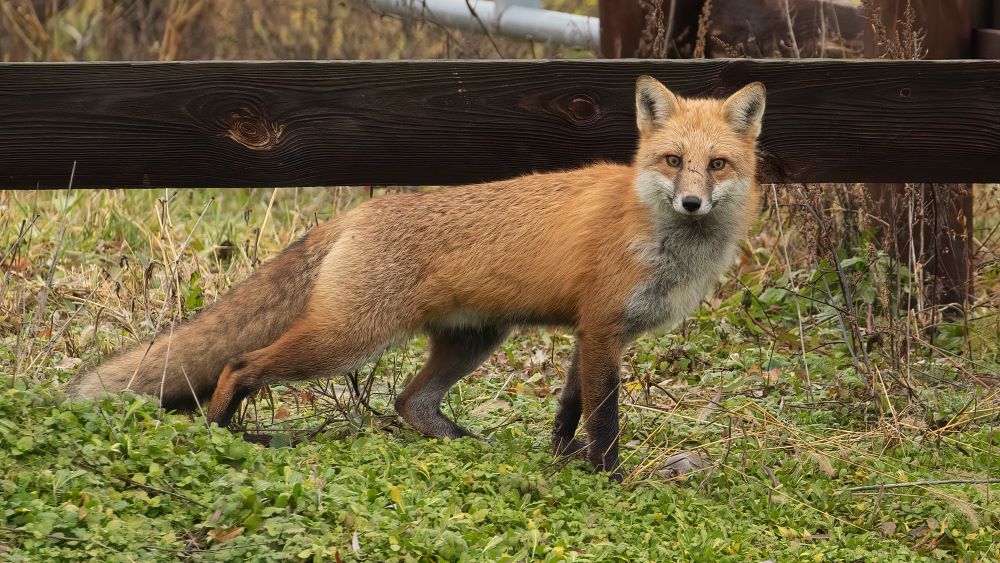
On the phenology clock, winter is an active season for the Red Fox (Vulpes vulpes) in our area. In January, I was in my backyard contemplating this fact, and how much I love foxes. Then, I looked down and saw fox prints going to and from our chicken run in multiple locations. This past October, a chicken of ours was out free ranging and she was taken by a fox, disappeared, reappeared the following day and lived to tell the tale. It is a complicated relationship. Our respect and awe for the wildlife we share the land with and their taste for our livestock whom we are responsible to protect. Knowing when foxes are more active and why helps with both building empathy and understanding as well as protecting your flock. Late December through late March is the breeding season for Red Foxes with peak activity in January. During this time, they engage in pair bonding behavior and it is much more common to see two foxes traveling together. In recent weeks, I have been seeing pairs and have heard them almost daily giving their barking vocalization- a contact call between mates. This afternoon a pair of foxes flushed from behind our shed just a stone’s throw from our coop. While squirrel hunting near Hurley a few weeks ago, my friend Jayne and I paused as we heard the telltale barking. We stood frozen as a pair of red foxes wove their way past us, vocalizing to one another as they meandered their way over blowdown and stumps. Have you heard or seen Red Fox pairs this winter where you live?
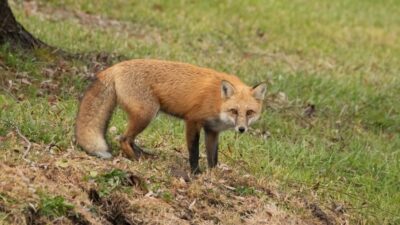
In the video below from our Farm Hub camera we often see Red Fox and Eastern Coyote footage in the same spot. Biologists note that coyote and fox territories do not often overlap, except perhaps in cases where prey is abundant and there is high quality habitat. This could explain our observations, as the farm provides ideal habitat with a mix of open, yet vegetated areas and forested areas nearby and also hosts abundant voles, small birds and other favored prey. In addition, the field our camera is placed in has a fair amount of woodchuck activity. Foxes will use cracks, crevices or dig their own dens, but often they prefer to adjust and widen an existing woodchuck burrow to raise their young in the spring. Red Foxes, while uncommon on our camera in spring through fall, were recorded frequently in winter just as breeding and pair bonding behaviors peaked. In comparison, coyote observations have been more regular over the course of the year so far on the camera.
Red Foxes have a widespread distribution globally and can be found anywhere from the arctic to the desert. They are the most widespread terrestrial carnivore in the world. In our area, they are most at home in mixed habitats that provide some open areas and denning sites as well as cover and woodlands. Though Red Foxes are found in many places throughout the globe, there are several different subspecies. There is still disagreement as to the original origin of the Red Fox as well as how many distinct species and/or subspecies exist today and which if any were moved by humans.
Interestingly, it is widely accepted by most biologists that the Red Fox thought to be native to North America is now quite uncommon. This has been attributed to the fact that the adaptable “old world” Red Fox, was brought over from Europe during colonization to provide hunting opportunities. As the theory goes, this subspecies of fox spread widely in North America and likely displaced the native subspecies of Red Fox throughout portions of its range. However, a 2014 paper, which reviewed evidence for this theory, suggests that the evidence to support the introduction theory is weak, and the subspecies once thought to be introduced is actually native to its range and should be treated as such, rather than an exotic introduced animal. This disagreement on taxonomy, origin and introduction seems to go back to papers I found written even in 1900. If you like, please do spend time researching this topic and let us know what you think in the comments below.
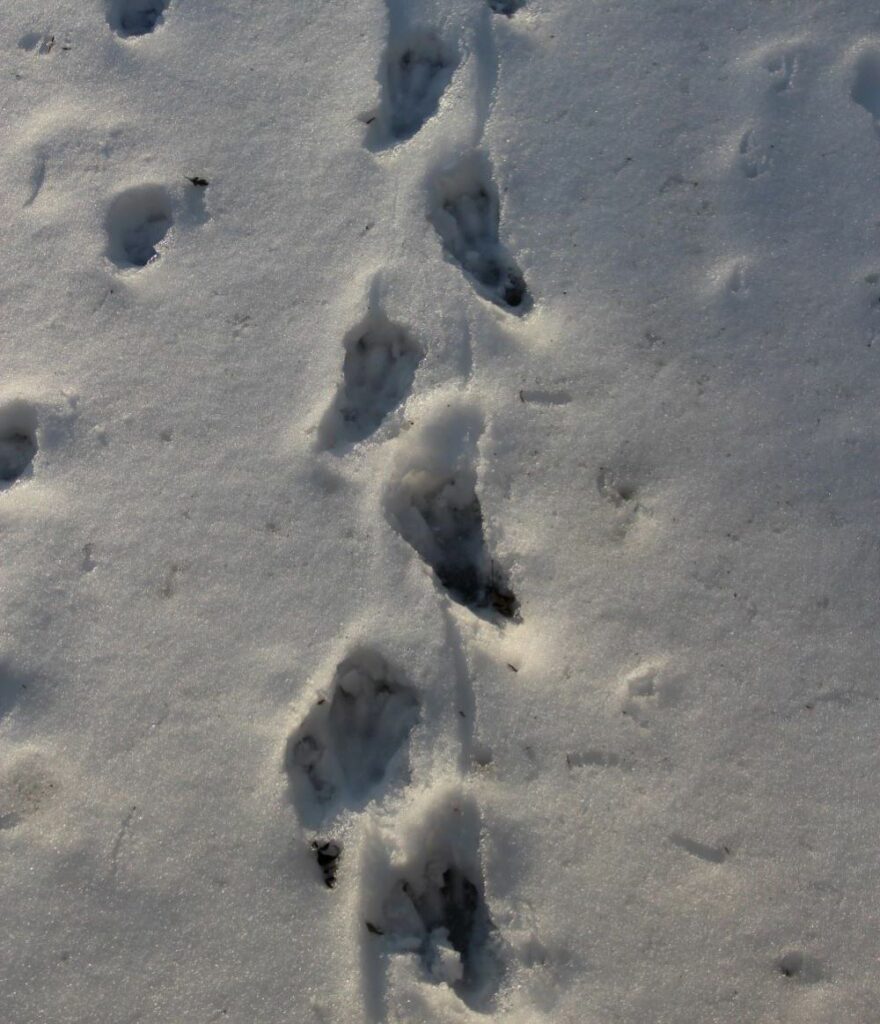
The North American Beaver
This past fall at the farm, we had been watching a large cottonwood tree being gnawed on by beavers. The North American Beaver (Castor Canadensis) eats a variety of herbaceous, aquatic and woody plants. Eastern Cottonwood trees (Populus deltoides), which are common in the floodplain forest of the Farm Hub, are a favorite. In the late 1800’s, beaver were nearly gone from New York State due to over trapping for pelts to sell to European markets. A reintroduction program in the early 1900s successfully restored their populations. The breeding season for beaver, much like Red Foxes, occurs in January through February, with young being born in the spring. In the slate-colored winter light on an overcast day, the lighter wood of the tree’s interior popped against the dark backdrop. In fall, beavers collect food and store it in a food cache at their lodges to get them through times of frozen water in winter where their preferred foods are harder to access. In cold winters, the Esopus Creek does freeze over in many locations, however, this winter has been warmer and the water has remained mostly open since winter began. Recent observations of the same tree showed fresh woodchips from recent activity. Beaver are strong swimmers due to their wide flat tail and hind webbed feet which give their track the distinct shape seen below. As long as water remains open, beaver will be active on land as the right photo of their tracks against a snowy backdrop demonstrates.
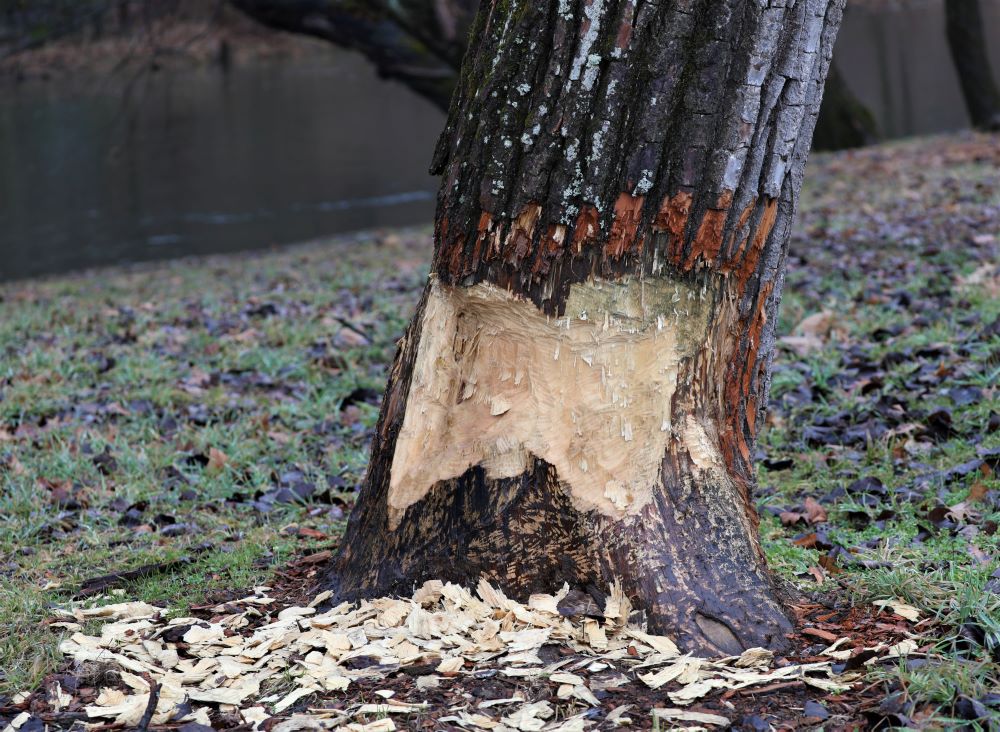
The White-tailed Deer
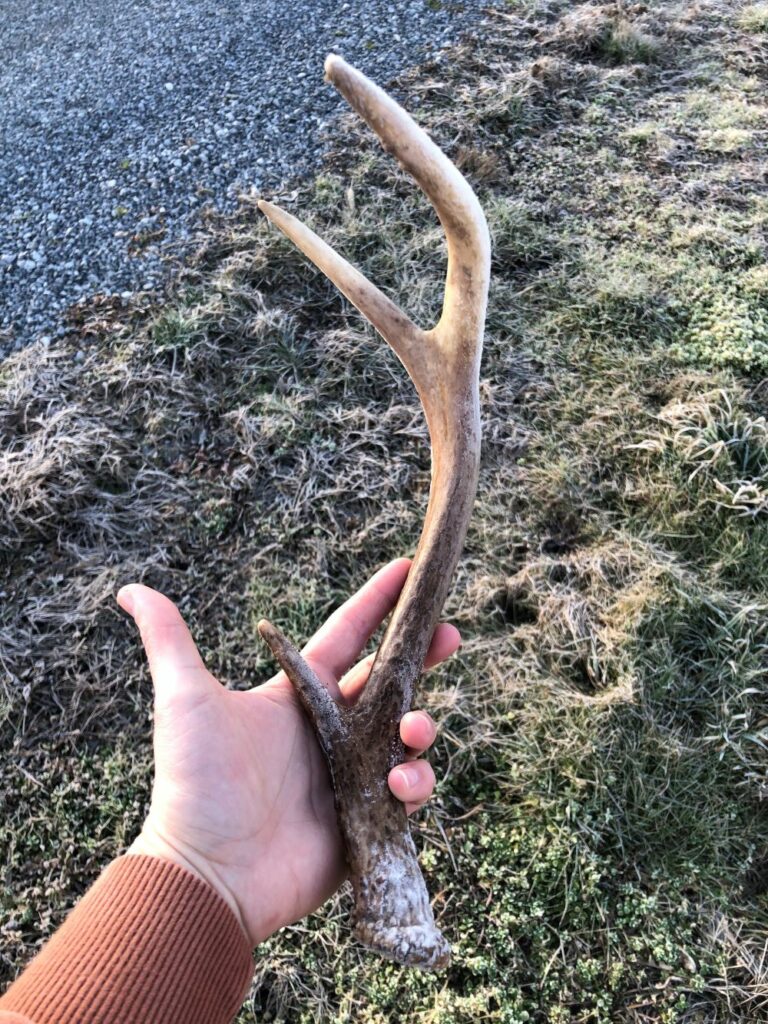
There’s nothing in the fall quite as exciting as seeing a large, mature White-tailed Deer buck in all his glory in our local woodlands and fields. With antlers adorned and a coat that defines the fall woodlands, they sport a white throat contrasting against a tawny brown fur the color of acorns and dried oak leaves. Their antlers stand proud and smooth, nubby, sharp and strong all at once. For their size, they walk softly, slipping through the woods like shadows. It is hard to believe looking at our deer populations and deer impacts today but, by the middle of the 19th century in New York, deer had been nearly extirpated due to overharvesting and habitat loss. By then it was quite rare to even see deer in our area. At first when colonists arrived, the land clearing for agriculture was advantageous for deer who thrive on edges of streams, fields and woods. However, with intense and widespread forest clearing for crops, the habitat become less suitable. A closed hunting season, new hunting regulations and forest regrowth due to farmland abandonment all helped in the recovery of our deer populations.
This time of the year, deer in our area have shed, or will soon shed their antlers. If you keep a close eye on the ground, you may even find some sheds. Each year, bucks regrow their antlers and make use of them during the breeding season for things like sparring or creating rubs, and then lose them in the winter once the breeding season has subsided. In the dead of winter, it can be quite challenging at a distance to discern a buck from a doe. Come spring, the cycle repeats itself once more.
As their antlers begin to grow in the spring, they are covered in a soft coating of velvet. In the video below from our camera in July, you can see the velvety covering. Also in July, does are caring for their new fawns. The fall breeding season where they are incessantly chased and guarded by bucks is a distant memory. Once the bucks’ antlers are done growing, they rub the velvet off, exposing the smooth hard antlers below.
As fall approaches, big changes are in store for the White-tailed Deer. Fall in our area is generally when the rut occurs. The rut marks strong behavioral shifts in deer as the breeding season comes into full swing. During this time, bucks are vying for does and a chance to mate. They will spar with other bucks, hitting their antlers together as if wrestling. Bucks will also guard and chase does as they come into estrus, meaning they are fertile and receptive for breeding.
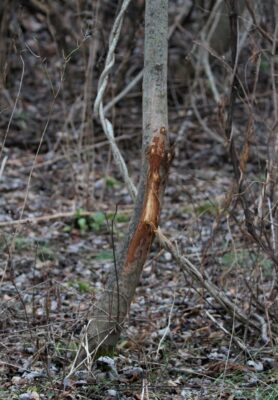
Bucks during this time will also make rubs and scrapes. This is their way of communicating their presence and dominance to other deer in the area. A rub generally occurs on smaller diameter trees and shrubs and looks exactly like the name. A rub is an area deer height or lower where a buck has used his antlers to rub off a portion of bark on a small tree. While a scrape, often seen under overhanging small branches, is a location where a buck has scraped up the ground and urinated to communicate using scent. The hanging branches above are often ever so slightly broken, due to the buck rubbing on them with glands in their head and face. Deer have an incredible sense of smell for detecting danger but also for communicating in this way. As the rut subsides, bucks become tired due to energy expended. By the time winter has come, bucks begin to turn their attention towards recovery and rest. Finally, they again drop their antlers and the cycle repeats.
In my time outside of work, I hunt deer near where I live. While in the woods I am constantly reminded what an honor it is to share our woods with them and how truly amazing their adaptations are for living in this landscape. My respect and admiration for White-tailed Deer knows no bounds and I would encourage you to find a quiet place in the winter woods or fields this winter and see if you can spend some time with them too. In later writings, I hope to go into more detail concerning the phenology and specific life cycle events for the White-tailed Deer, but for now, a brief overview will suffice. Winter is a wonderful time to walk or sit quietly in the winter woods and look for deer, their sign and sheds.
Wintering Birds
When we think of spring bird migration, we tend to think of flowers, swallows darting about, green grass and longer days. In reality, spring migration begins around the middle of February in the Hurley Flats. Many of our arrival records at the Farm Hub for species such as Killdeer, Common Grackle and Red-winged Blackbird fall between February 13th-19th. Different factors influence the timing of migratory movements. One variable that is interesting to observe is the influence of wind patterns on migratory bird movements. With many migratory birds wintering south of their breeding range and moving north in the spring, prevailing winds out of the south provide an advantage to birds. They can more easily travel with the wind behind them and cover more ground, rather than flying against it. A south wind during spring migration is an excellent time to observe migratory birds.
Then, there are birds who winter in our area who will be leaving us soon for their more northern breeding grounds. The American Tree Sparrow and Dark-eyed Junco are two species who are commonly found on farms in winter but move to more northern or higher elevation habitats to nest. American Tree Sparrows frequent weedy or unmown farm fields and edges in winter as seen in the photo here. However, in spring, they head far north to breed on the tundra in Alaska and Canada.
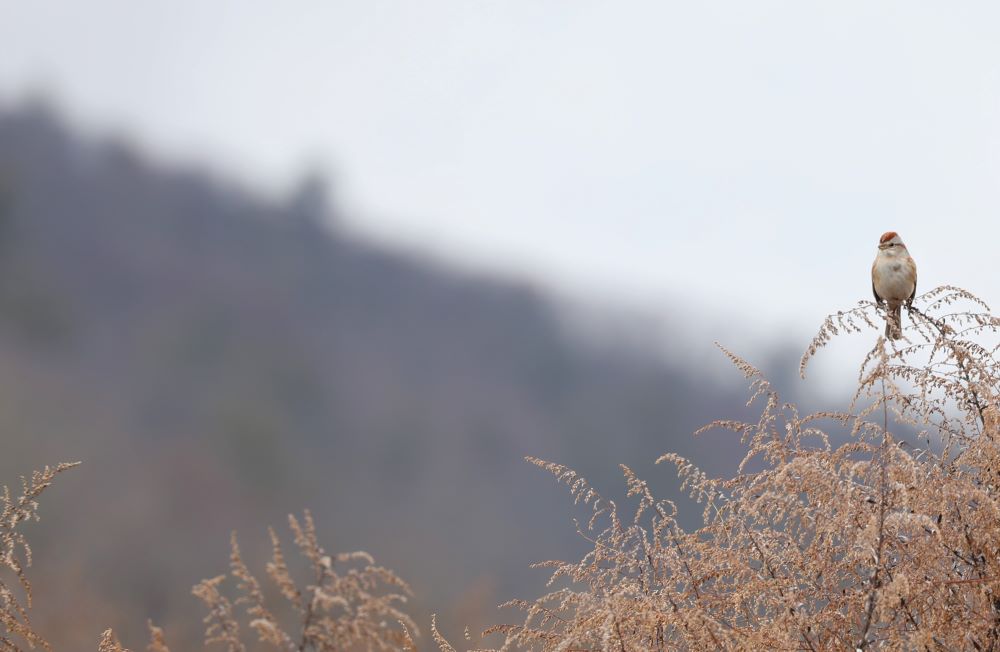
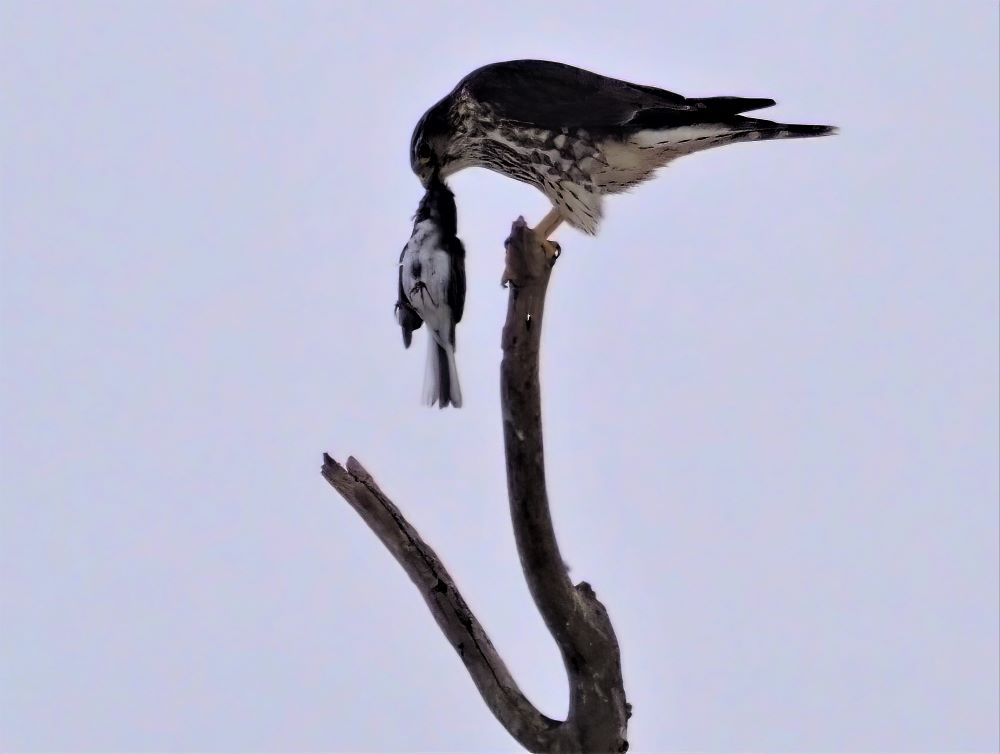
Dark-eyed Juncos can stay a little closer to their wintering grounds. They also frequent farms in winter, often sticking to edge habitats where the forest meets field. Some Juncos in our area go just “up the hill” to the Catskill Mountains. They nest in higher elevation areas and place their nests in the woods among patches of open ground. Nests are placed on the ground and can sometimes be observed along the edges of Catskill hiking trails. On a recent bird survey documenting birds and their use of different habitats, Farm Hub Volunteer Dixon Onderdonk was able to capture this incredible image of a Merlin eating a Dark-eyed Junco. Note the Junco’s slate-colored plumage contrasting with white along with white outer tail feathers. Merlins are a species of falcon found in our area mainly during migration and winter. Their diet consists largely of small birds such as the junco pictured here. They are smaller than Peregrine Falcons, but larger than American Kestrels. Merlins, along with many other falcon species, use impressive aerial maneuvers when they are pursuing prey and are capable of capturing birds in midair.
Another species of falcon, the American Kestrel, can be seen in our area in the winter. Kestrels are North America’s smallest falcon. They are also a declining species that we intentionally manage for here at the farm. The Farm Hub made the decision years ago to never use any rodenticides to protect raptors such as kestrels. In addition, we provide nesting boxes for kestrels since natural cavities in open areas for nesting are limited on the farm. You can learn more about our work with kestrels here. Kestrels at our latitude are only partially migratory and will move in response to availability of food. Males typically winter farther north than females. At the Farm Hub, we tend to see only a single male kestrel at a time in winter. In spring and summer, we see males, females and juveniles as well as higher numbers of individuals at one time. Quite a few pass through the farm on migration, while only a couple pairs stay and nest in our two nest boxes.
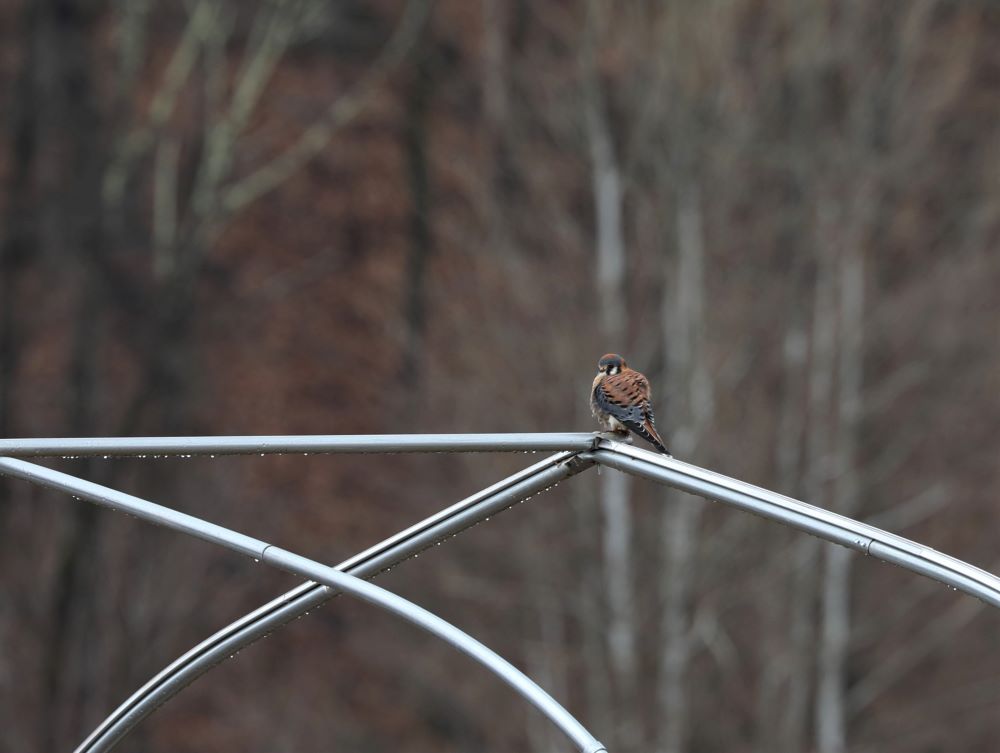
Winter is an active time of the year for the Great Horned Owl. While many birds in our area nest in the spring and summer, Great Horned Owls engage in courtship, egg laying and raising young starting in the cold winter months. While solitary the rest of the year, a pair of Great Horned Owls will engage in pair bonding behavior in winter. They are generally considered monogamous, staying with the same mate for several years. Great Horned Owl male and females have different pitched vocalizations. In winter, you can often hear them at night and early in the morning, hooting back and forth in a calming duet. As they duet back and forth, they also engage on a bowing and bobbing behavior leading up to mating. Great Horned Owls are known to use tree nests of other bird species. At the Farm Hub last winter, we observed a female incubating eggs in what had been an active Bald Eagle nest for several years prior. Much like Great Horned Owls, Bald Eagles begin their courtship, egg laying and incubation in the colder winter months. Later in the spring we were able to observe the owl chicks as they grew. So far this winter, the nest isn’t being used by either eagles or owls.
In closing
The idea that winter is quiet, still and restful is merely our own perspective. For many creatures who inhabit our farm fields and woodlands, winter is a time of pair bonding, sparring, breeding, egg laying, carrying and raising young and defending home range territories. For others, it is a time to slumber, hibernate and recharge. Perhaps both exist in a rhythm of dipping and rising temperatures and shifting darkness and light. As we turn inward in the short, dark days of winter, may we also consider the perspectives of those too who know the dark but in a different way.
To Know the Dark, by Wendell Berry
To go in the dark with a light is to know the light.
To know the dark, go dark. Go without sight,
and find that the dark, too, blooms and sings,
and is traveled by dark feet and dark wings.
What do you notice?
What do you notice and observe on the land where you live or visit in the winter. Do you see the same things discussed here? Or do you notice different things? Please do share your observations in the comments section below. Or you can reach out to me at [email protected].
References
Frey, Jennifer K. “Re-Evaluation of the Evidence for the Importation of Red Foxes from Europe to Colonial America: Origins of the Southeastern Red Fox (Vulpes Vulpes Fulva).” Biological Conservation, vol. 158, Feb. 2013, pp. 74–79, https://doi.org/10.1016/j.biocon.2012.07.027. Accessed 11 May 2019.
Header Photo: Horned Larks, Courtesy of Bob Miller
